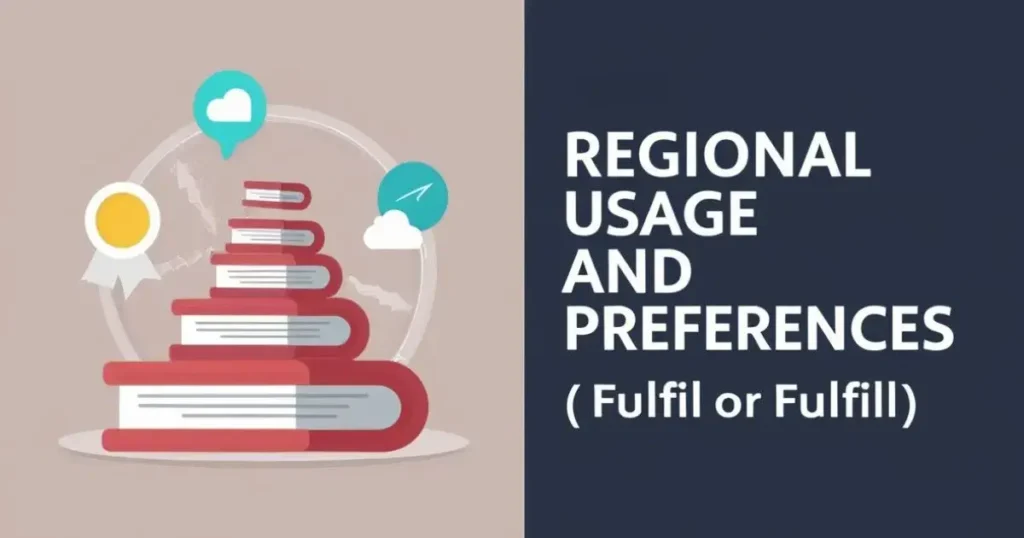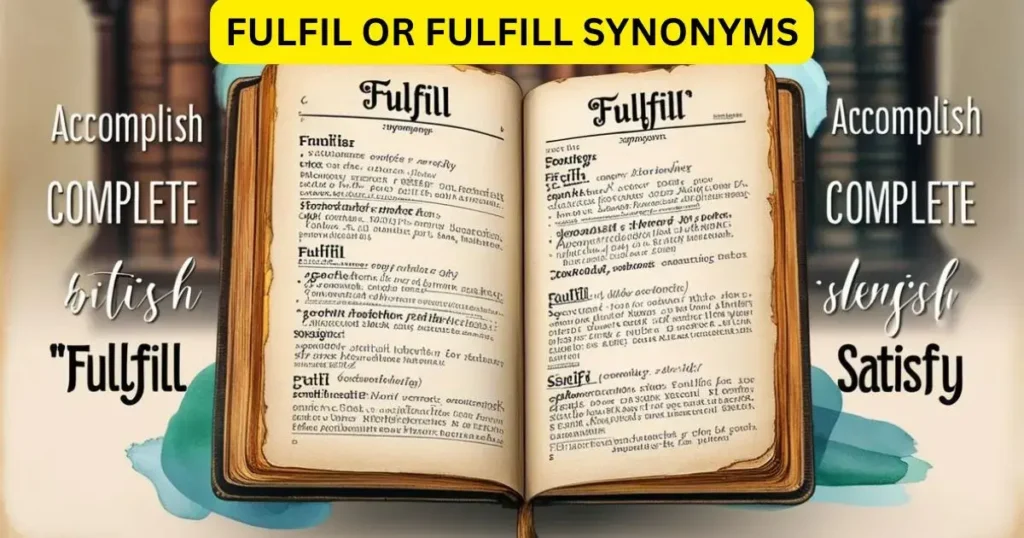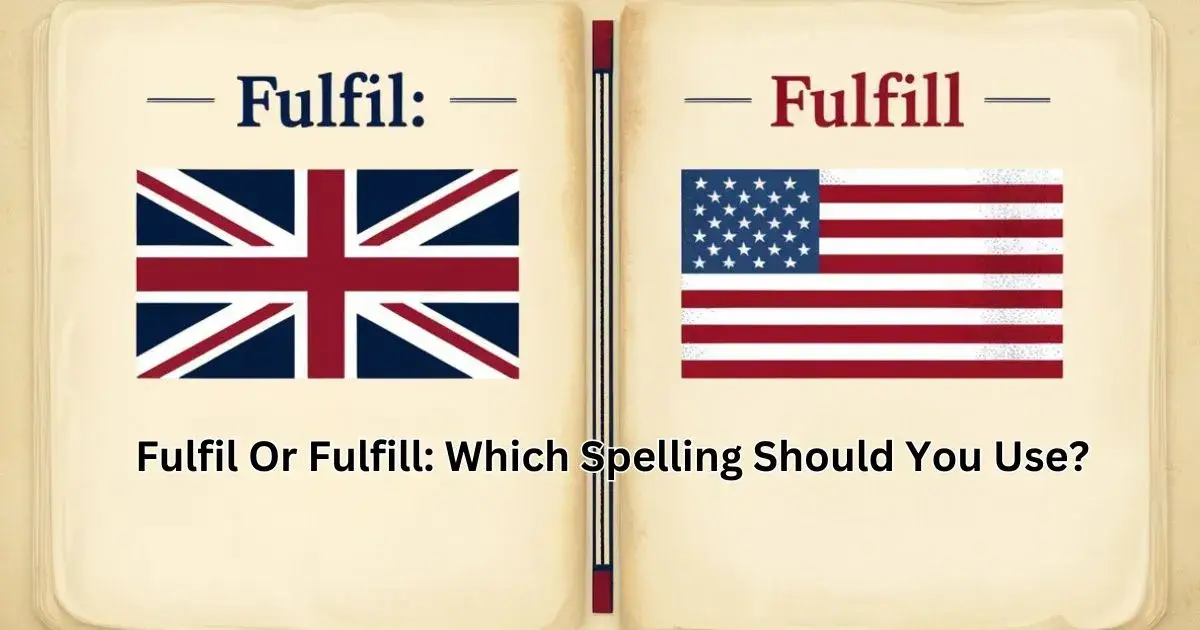Fulfil or fulfill – these spelling variations often create confusion among writers and English language learners worldwide. The distinction between these spellings lies primarily in regional preferences, with both forms being correct in different contexts. This comprehensive guide will help you understand when to use each spelling variation and ensure your writing meets the appropriate standards for your audience.
Definitions and Usage: What Do “Fulfil” and “Fulfill” Mean?
Fulfil and fulfill both share the same meaning. They refer to the act of completing, satisfying, or bringing something to fruition. For example, when you fulfil a promise, you are ensuring that you complete the commitment you made.
Fulfil:
- Definition: To bring to completion, to achieve or satisfy a requirement, to execute or carry out fully.
- Usage: Primarily used in British English (UK), Australian English, and other Commonwealth countries.
Fulfill:
- Definition: Same as “fulfil,” meaning to carry out or complete a task, promise, or requirement.
- Usage: Predominantly used in American English.
Examples of each word in sentences:
- Fulfil: He hopes to fulfil his obligations to the community.
- Fulfill: She worked hard to fulfill her dreams of becoming an artist.
Regional Usage and Preferences

American English
In the United States, fulfill is the standard spelling. This applies to all forms of writing, from academic papers to business communications. American publishers, schools, and organizations consistently use this spelling.
British English
The UK and most Commonwealth nations prefer fulfil. This includes Australia, where the question of fulfill australian spelling is commonly raised. For those wondering about fulfil vs fulfill in British contexts, fulfil is the standard choice.
Common Forms and Derivatives
Present Tense:
- UK: fulfil, fulfils
- US: fulfill, fulfills
Past Tense and Participles:
Both regions use “fulfilled” and “fulfilling”
Noun Form:
- UK: fulfilment
- US: fulfillment
When to Use Each Spelling
Use “Fulfill” When:
- Writing for an American audience
- Following US style guides
- Publishing in American journals or media
- Writing business documents for US companies
Use “Fulfil” When:
- Writing for British, Australian, or Commonwealth audiences
- Following UK style guides
- Publishing in British media
- Preparing documents for UK-based organizations
Comparison Table: Fulfil vs Fulfill
To provide a clearer breakdown of the differences between “fulfil” and “fulfill”, here’s a simple comparison table:
| Aspect | Fulfil (British English) | Fulfill (American English) |
|---|---|---|
| Definition | To complete or achieve something | To complete or achieve something |
| Regional Usage | Common in UK, Australia, and Commonwealth countries | Common in the US and Canada |
| Spelling | Preferred in British and Australian English | Preferred in American English |
| Common Contexts | Used in formal writing, legal contexts, and general British English | Used in formal writing, legal contexts, and general American English |
| Examples | She aims to fulfil her promises. | He strives to fulfill his responsibilities |
Fulfil or fulfill Synonyms

Common Synonyms for Both Forms:
- Complete
- Accomplish
- Achieve
- Execute
- Realize
- Perform
- Satisfy
- Actualize
- Implement
- Consummate
Everyday Usage Examples: Fulfil vs Fulfill
To help clarify when to use “fulfil” and “fulfill,” here are some fulfil or fulfill examples that show how both spellings are used in different contexts:
Writing a job application
- British English: I am confident that my experience will help me fulfil the requirements of this role.
- American English: I am confident that my experience will help me fulfill the requirements of this role.
Making a promise
- British English: It’s important to fulfil your promises to maintain trust.
- American English: It’s important to fulfill your promises to maintain trust.
Reaching a goal
- British English: She worked hard to fulfil her dream of becoming a doctor.
- American English: She worked hard to fulfill her dream of becoming a doctor.
Digital Content Considerations

When writing for digital platforms, consider:
- Your target audience’s location
- Search engine optimization (both spellings may be necessary)
- Website’s primary market
- Style guide requirements
Pronunciation Guide
The pronunciation remains the same regardless of spelling:
- /fʊlˈfɪl/ or /fʊl-ˈfɪl/
- Hindi speakers often translate it as “पूरा करना” (fulfill meaning in Hindi)
Common Questions Answered
Fulfil or Fulfill Oxford Dictionary?
The Oxford Dictionary recognizes both spellings but primarily uses fulfil as the main entry.
How to pronounce Fulfil?
The word “fulfil” is pronounced the same way as “fulfill.” It is pronounced as /fʊlˈfɪl/, with the emphasis on the second syllable. Both the British English spelling “fulfil” and the American English “fulfill” share the same pronunciation.
Fulfill or Fulfil Australia?
Australian English typically follows British conventions, preferring fulfil.
Fulfil or Fulfill Meaning?
Both spellings share identical meanings and can be used interchangeably based on regional context.
Conclusion
Understanding the distinction between fulfil or fulfill comes down to knowing your audience and region. While both spellings are correct, choosing the appropriate version helps maintain professionalism and clarity in your writing. Remember:
- Use fulfill for American audiences
- Use fulfil for British, Australian, and Commonwealth audiences
- Maintain consistency within your document
- Consider your publication’s style guide
Whether you choose fulfil or fulfill, ensuring consistent usage throughout your writing is key to maintaining professional standards and clear communication.
Bonus Tip: If you’re unsure which spelling to use, always check the Oxford Dictionary or the style guide appropriate to your region. Whether you choose fulfil or fulfill, the important thing is that your message is conveyed.

This author is a passionate linguist and grammar enthusiast, dedicated to helping individuals master the art of language. With years of experience in teaching and editing, she brings clarity and precision to every sentence. Tina’s mission is to empower writers of all levels to express themselves with confidence and excellence.

